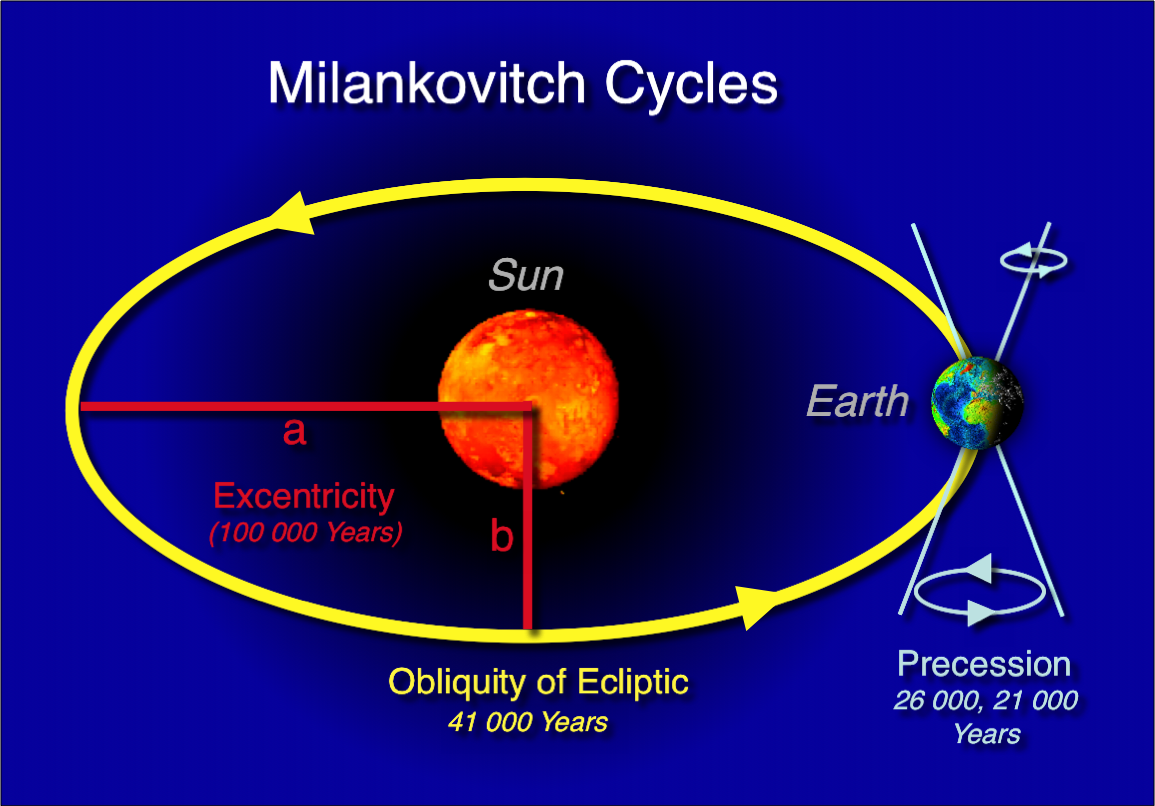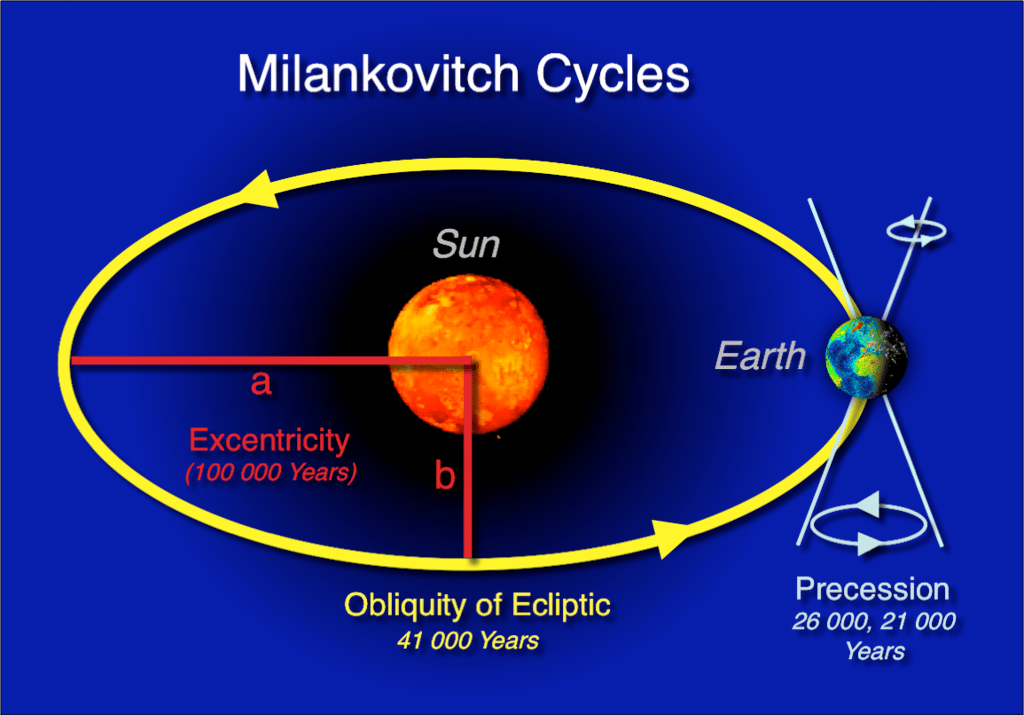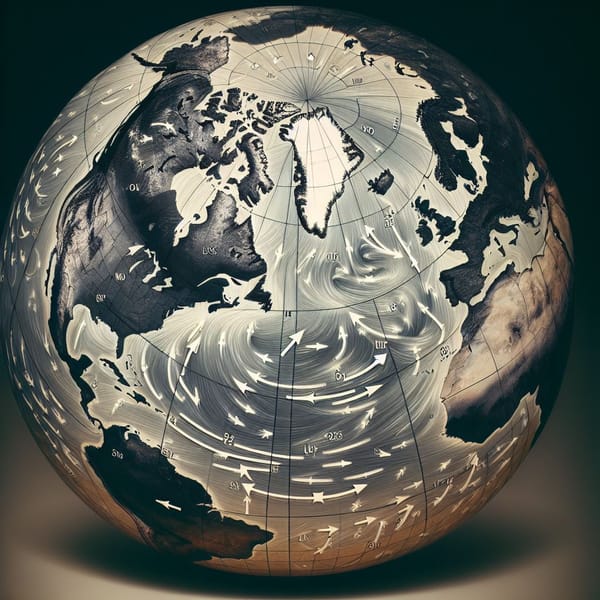Milankovitch Cycles
Dive deep into the science of Milankovitch Cycles with StormHour. Explore how Earth's orbit and tilt influence climate change over thousands of years, impacting ecosystems and weather patterns globally.

The Milankovitch cycles (named after the mathematician and meteorologist Milutin Milankovitch) are incredibly long astronomical trends that affect the dispersion of solar energy and have been suggested to be the ice age pacemakers.
One of the most constant features of our weather is the seemingly unvarying yearly cycle of seasons. In reality, the seasons change over time due to changes in the Earth’s rotation and orbit caused by the moon and planets’ gravitational pull.
This is due to the shift in date of the Earth’s annual closest approach to the Sun. It takes 2,200 years for a cycle to conclude, so while the Earth is now closest to the Sun on 3rd January each year, 11,000 years ago, it was July 3rd.
The Earth’s orbit is only about 97% circular. As a result, the distance between the closest and most distant points from the Sun varies, with a peak difference of 5,000,000 kilometres occurring in 2017. This distance fluctuates up to almost 15 million kilometres over around 100,000 years.
Finally, the tilt of the Earth changes from 22.1 to 24.5 degrees over approximately 41,000 years. These three cycles do not alter the overall amount of energy received from the Sun, but they change how much energy is delivered in each season and hemisphere.
According to Milankovitch, this variation is said to have been the “father” of ice ages. However, additional modifying processes are required to explain how these tiny variations led to the polar ice sheets advancing over far more of the northern hemisphere than they do today.
The history of the ice ages can now be traced back millions of years, thanks to data from cores drilled out of Greenland and Antarctica ice sheets and land and ocean sediments. These records indicate 45,000- and 100,000-year Milankovitch cycles. The last million years have experienced cycles of ice-ages and interglacials roughly every 100,000 years, with the last ice age ending just 11,000 years ago.
Milutin Milankovic’s explanation for cycles in the Earth’s rotation and orbit, a century after Louis Agassiz’s discovery that the planet has gone through a succession of ice ages and interglacials, was based on cycles in the planet’s rotation and orbit.

Milutin Milankovitch, an ethnic Serb, was born in the Balkans in 1879 within the territory of the Austro-Hungarian empire. From an early age, he displayed a gift for mathematics. He began his professional life as a civil engineer, assisting in the construction of bridges, dams, and hydroelectric power stations and developing particular expertise in the uses and properties of concrete. Following his appointment in 1909, at the age of 30, to an academic position in applied mathematics at Belgrade University, he focused increasingly on meteorology and climate.
At Belgrade, Milankovitch was intrigued by the question of why there are recurring ice ages in the Earth’s geological record. He believed a relationship existed between the Sun and these cyclical ice ages and involved the Earth’s orbit. Realising that rigorous mathematical methods had not yet been used to study this meteorological and climatic enigma, he examined how the Earth’s orbit and tilt changed over time.
The theory that mathematics might be able to explain climate phenomena drove Milankovitch to develop a link between the Earth’s orbit and the apparent pattern of recurring ice ages. In 1912, he postulated that long-term cycles in the climate were caused by astronomical movements of the Earth – what we now know as Milankovitch cycles.
When Serbia broke away from Austria-Hungary, Milankovitch was imprisoned on the eve of World War I. His release was aided by a former university professor, who persuaded the authorities to allow him to work in Belgrade for the remainder of the conflict. He returned to Belgrade University after the war, where he continued developing his ideas, becoming an internationally recognised author.
Milankovitch died in 1958, and his astronomical explanation for the ice ages fell out of favour in the years that followed. Nevertheless, his ideas were gradually rehabilitated, and his theory was fully validated in 1976 with the publication of a major scientific paper in the prestigious journal Science. The study of deep-sea sediments revealed evidence of long-term climatic cycles.
The researchers’ conclusion that “changes in the earth’s orbital geometry are the fundamental cause of the succession of Quaternary ice ages” proved that Milankovitch was correct.





